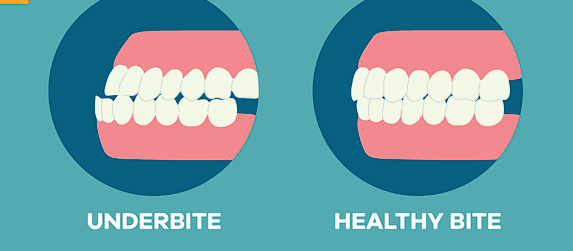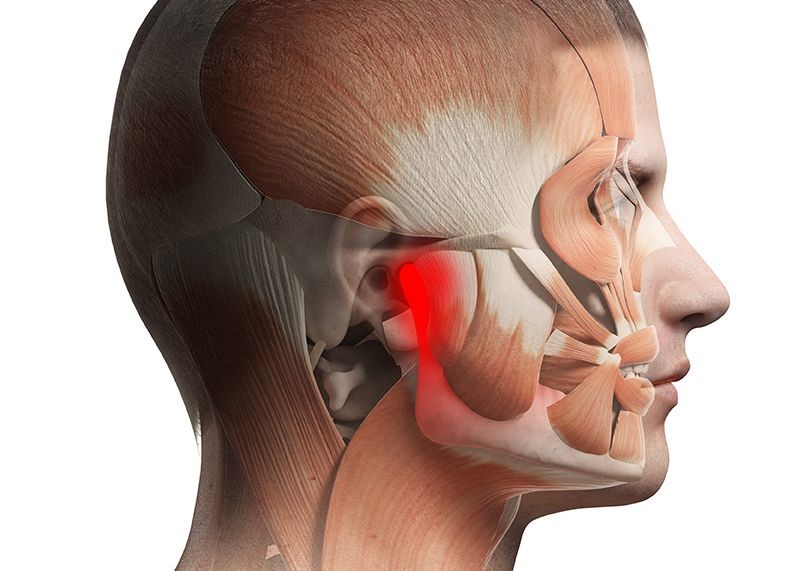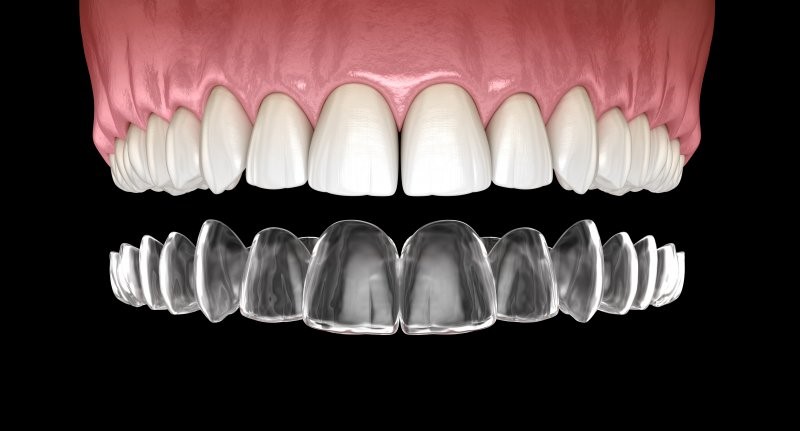What Is An Underbite?
Do you have an underbite and wondering what it means for your dental health? An underbite is a dental condition in which the lower jaw protrudes beyond the upper jaw. This misalignment can cause a range of dental issues, including difficulty chewing and speaking, facial asymmetry, and even sleep apnea. However, the good news is that underbites are treatable through orthodontic procedures. In this blog, we’ll take a closer look at what underbite is, how it’s treated, and what to expect during treatment.

Understanding Underbite: What Are the Causes and Symptoms?
Causes:
An underbite occurs when the lower teeth and jaw extend beyond the upper teeth and jaw. This can be due to a variety of factors, including genetic inheritance from parents, poor childhood habits such as thumb-sucking or pacifier use, and mouth breathing. When a child breathes through their mouth, it can cause their tongue to rest in a lower position in the mouth, which can put pressure on the lower jaw and cause it to grow more than the upper jaw.
Genetics can also play a significant role in the development of an underbite. It is not uncommon for underbites to run in families, and children with parents who have an underbite are more likely to develop one themselves. In some cases, an underbite can also develop due to trauma or injury to the face or jaw.
It’s important to note that while these factors can contribute to the development of an underbite, the exact cause may not always be clear. If you suspect that you or your child has an underbite, it’s essential to seek professional dental care for diagnosis and treatment.
Symptoms:
Some common symptoms of an underbite include:
• Protruding lower jaw
• Difficulty biting or chewing
• Speech problems
• TMJ pain
• Uneven facial features
If left untreated, an underbite can cause additional dental problems, including tooth decay, gum disease, and temporomandibular joint (TMJ) disorder. TMJ disorder is a condition that affects the jaw joint and can cause pain, stiffness, and difficulty opening or closing the mouth.

Early intervention and treatment of an underbite can prevent these problems and improve the overall function and appearance of the teeth and jaws. Your dentist or orthodontist can perform a thorough examination and recommend the best treatment options for your specific needs.
How to Diagnose an Underbite: A Guide for Patients
During a dental examination, your dentist or orthodontist will carefully examine your teeth, jaws, and facial structure to determine if you have an underbite. They may also take X-rays, photographs, and impressions of your teeth to get a better understanding of the position of your teeth and jaws. This will help them to create a personalized treatment plan that addresses your specific needs.
Your dentist or orthodontist may also ask you questions about your symptoms and medical history. This will help them to determine if your underbite is caused by genetics, childhood habits, or other factors. It’s important to be honest and thorough when answering these questions so that your dentist or orthodontist can provide the most accurate diagnosis possible.
If you are experiencing symptoms such as difficulty biting or chewing, speech problems, TMJ pain, or uneven facial features, it’s important to mention these to your dentist or orthodontist during your examination. They will take these symptoms into account when creating your treatment plan.
Treating Underbite: Orthodontic Options Explained
If you have been diagnosed with an underbite, there are several orthodontic treatment options available to correct the problem. Your dentist or orthodontist will work with you to determine the best course of treatment based on the severity of your underbite and your individual needs.
- Braces: Traditional metal braces are a common treatment option for underbites. They work by applying pressure to the teeth and gradually shifting them into the proper alignment. The braces are attached to the teeth using brackets and wires that are adjusted over time to achieve the desired results.
- Invisalign: Clear aligners, such as Invisalign, are a popular alternative to traditional braces. These clear, removable aligners are custom-made to fit your teeth and are virtually invisible. They can be removed for eating and cleaning, making them a convenient and discreet option for underbite treatment.
- Reverse-pull face mask: For younger patients with underbites, a reverse-pull face mask may be recommended. This device is worn over the head and attaches to braces to gently pull the upper jaw forward. This helps to correct the bite by moving the upper teeth forward and aligning them with the lower teeth.
- Jaw Surgery: In severe cases, orthognathic surgery may be necessary to reposition the jawbones. This surgery is typically performed in conjunction with braces or other orthodontic treatments to achieve the best results. Jaw surgery is a complex procedure and is typically reserved for patients with severe underbites or other significant jaw abnormalities.
It’s important to note that the treatment options for underbites will vary depending on the severity of the condition and the individual needs of the patient. Your dentist or orthodontist will work with you to determine the best course of treatment for your specific case. By addressing your underbite with orthodontic treatment, you can achieve a more functional bite, a better-looking smile, and improved oral health.
Invisalign for Underbite: A Comprehensive Guide
Invisalign is an increasingly popular option for underbite correction. Here are some things to know if you’re considering Invisalign:
• Invisalign aligners are custom-made for your teeth and are changed out every two weeks.
• Treatment typically takes 12-18 months, depending on the severity of the underbite.
• Invisalign aligners should be worn for 20-22 hours per day and removed only for eating and cleaning.
• Invisalign aligners are virtually invisible and won’t interfere with your daily life.

The Importance of Early Intervention for Underbite Correction
It’s important to seek treatment for an underbite as early as possible, ideally before the age of 10. Early intervention can help to prevent more severe dental issues from developing and can make treatment easier and faster.
The Pros and Cons of Orthodontic Appliances for Underbite Correction
Orthodontic appliances are commonly used to correct underbites and other orthodontic issues. While these appliances can be effective, they also have their own set of pros and cons. Here are some of the key advantages and disadvantages of orthodontic appliances for underbite correction:
Pros:
- Effective: Orthodontic appliances are designed to gradually shift the teeth and jaws into the proper alignment, resulting in a corrected bite.
- Customizable: There are a variety of different orthodontic appliances available, each with its own set of advantages and disadvantages. This allows for a customized treatment plan that is tailored to the individual patient’s needs.
- Versatile: Orthodontic appliances can be used to correct a wide range of orthodontic issues, including underbites, overbites, and crowding.
- Long-lasting results: With proper care and maintenance, the results of orthodontic treatment can last a lifetime.
Cons:
- Discomfort: Orthodontic appliances can be uncomfortable to wear, particularly in the early stages of treatment. Patients may experience soreness, tenderness, and difficulty eating or speaking.
- Visibility: Traditional metal braces are highly visible and may impact the patient’s appearance during treatment. While newer options such as clear aligners are available, they may not be appropriate for all patients.
- Maintenance: Orthodontic appliances require regular maintenance and cleaning to ensure they remain effective. Patients may need to make adjustments to their diet and oral hygiene routine during treatment.
- Time-consuming: Orthodontic treatment can be a lengthy process, often lasting several months or even years. Patients must be committed to wearing their appliances as directed by their dentist or orthodontist.
Underbite Correction: How Long Does Orthodontic Treatment Take?
Underbite correction is a common orthodontic treatment that involves gradually shifting the teeth and jaws into proper alignment. One of the most common questions patients have about underbite correction is how long the treatment will take. The length of treatment can vary depending on several factors, including the severity of the underbite and the chosen method of correction. Here are some general guidelines for how long underbite correction treatment may take:
- Braces: Traditional metal braces are a common treatment option for underbites. Treatment time with braces typically ranges from 18-36 months, depending on the severity of the underbite and the individual patient’s needs.
- Invisalign: Clear aligners such as Invisalign can also be used to correct underbites. Treatment time with Invisalign varies depending on the severity of the underbite and the individual patient’s needs. In general, Invisalign treatment for underbites may take anywhere from 6-18 months.
- Reverse-pull face mask: For younger patients with underbites, a reverse-pull face mask may be recommended. Treatment time with a reverse-pull face mask typically ranges from 9-18 months, depending on the severity of the underbite and the individual patient’s needs.
- Jaw Surgery: In severe cases of underbite, jaw surgery may be necessary to reposition the jawbones. The length of treatment with jaw surgery will vary depending on the complexity of the procedure and the individual patient’s needs. In general, patients can expect the recovery period after surgery to take several weeks or even months.
It’s important to note that these timelines are just general guidelines, and the actual length of treatment will vary depending on each individual patient’s needs. Factors such as patient compliance with treatment and the severity of the underbite can also impact treatment time. It’s important to discuss your individual treatment plan with your dentist or orthodontist to get a more accurate estimate of how long your underbite correction treatment will take.
Maintaining Results: Tips for Post-Treatment Underbite Care
Once your underbite treatment is complete, it’s important to take good care of your teeth to maintain your results. This may include:
• Wearing a retainer as directed by your orthodontist
• Practicing good oral hygiene, including brushing and flossing regularly
• Avoiding hard or sticky foods that can damage your teeth or braces
Where To Find The Best Underbite Treatment Near You?
If you’re looking for the best treatment options for underbite correction, look no further than Dr. Azita Abbasi. Dr. Abbasi is a highly experienced female orthodontist who specializes in underbite correction using the latest technology and techniques.
One of the treatment options offered by Dr. Abbasi is Invisalign, a clear aligner system that is virtually invisible and provides a more comfortable alternative to traditional metal braces. With Invisalign, you can achieve the perfect smile you’ve always wanted without anyone knowing you’re undergoing treatment. Learn more at Top Nova Orthodontics Under Bite Treatment.
Dr. Abbasi also offers other treatment options for underbite correction, including traditional metal braces and surgeries for severe cases. With these options, you can rest assured that you’ll receive the best possible care and achieve the perfect smile you’ve always wanted.
Dr. Abbasi’s office believes everyone should have access to the best orthodontic treatment, and the cost of treatment can be a concern for some patients. That’s why they offer a range of financial plans to help make underbite correction more affordable for everyone. They offer free consultations, discounts on treatment plans, and installment plans with no interest, making it easier than ever to achieve your perfect smile.
Don’t let an underbite hold you back from living your best life. Contact Dr. Abbasi today to schedule your free consultation and learn more about your underbite correction options. Visit their website to learn more about their services and schedule your appointment today.
Conclusion:
In conclusion, underbite correction is a common orthodontic treatment that can greatly improve the appearance and function of your teeth and jaws. Whether you choose traditional metal braces, Invisalign clear aligners, a reverse-pull face mask, or orthognathic surgery, there are a variety of treatment options available to help you achieve the perfect smile you’ve always wanted.
It’s important to work with an experienced orthodontist who can help guide you through the treatment process and ensure that you receive the best possible care. By following your orthodontist’s treatment plan and practicing good oral hygiene, you can achieve a beautiful, healthy smile that you’ll be proud to show off.
Remember that the length of underbite correction treatment can vary depending on several factors, including the severity of your underbite and the chosen method of correction. However, with patience and commitment, you can achieve the results you’re looking for and enjoy the benefits of a healthy, attractive smile. If you’re considering underbite correction, be sure to schedule a consultation with a qualified orthodontist to discuss your options and determine the best treatment plan for your individual needs. With the right care and treatment, you can achieve the perfect smile you’ve always wanted and enjoy improved oral health and function for years to come.


